As indigenous species in Hawai'i, sea turtles play an important role in Hawaiian cultural traditions and mo'olelo (stories). The honu (green turtle) and 'ea (hawksbill turtle) are mentioned in the fourth verse of the Kumulipo, the Hawaiian creation chant. Some families continue to revere sea turtles as their 'aumākua, or spiritual guardians.
As indigenous species in Hawai'i, sea turtles play an important role in Hawaiian cultural traditions and mo'olelo (stories). The honu (green turtle) and 'ea (hawksbill turtle) are mentioned in the fourth verse of the Kumulipo, the Hawaiian creation chant. Some families continue to revere sea turtles as their 'aumākua, or spiritual guardians.

Did You Know?
- Green and hawksbill turtles evolved as species 40 to 50 million years ago. The oldest turtles lived 200+ million years ago.
- Both species are indigenous to the Hawaiian Islands.
- Green turtles are the most common in Hawaiʻi. They are the only Hawaiʻi turtles that bask on land to rest and regulate their temperature – basking can last up to 2 to 3 days.
- Even though the population of green turtles is slowly increasing, they remain threatened because of its small isolated population (around 4,000 nesting females) and because 96% of nesting occurs at a single vulnerable atoll, French Frigate Shoals, in the Northwest Hawaiian Islands.
- Green turtles are named as such due to the color of their fat, not their shell or skin.
- Hawksbill turtles are endangered, with only a very small population living in the Hawaiian Islands. The population is not currently increasing and they are very vulnerable.
Sharing the Environment with Sea Turtles
Help preserve Hawai'iʻs sea turtles.
Stay at least 10 feet away from sea turtles – disturbance disrupts normal behavior and causes stress.
Stay behind any ropes or signs near sea turtles and please follow recommendations and instructions provided by Hawai’i Marine Animal Response (HMAR), law enforcement or other NOAA-sanctioned personnel on scene.
Do not touch or attempt to move sea turtles, do not pour water on them, do not feed sea turtles – directly or indirectly, and encourage others to view respectfully.
Use barbless hooks and check your fishing gear and net often. Please follow all fishing and net use rules. Release accidentally caught turtles by first calling the NOAA marine wildlife hotline at (888) 256-9840, then carefully real in the sea turtle, cut your line as close to the turtle as possible, leave the hook behind, and then gently release the animal. Remember, if you accidentally catch a sea turtle, “it’s OK to help.”
Use wildlife friendly lighting on the beach and near the shore. Bright white lights can disorient baby sea turtles from getting to the ocean after hatching.
Do not drive on the beach where you could injure a sea turtle or damage a nest. Sea turtle nests must remain undisturbed. Keep your pets on leash to minimize sea turtle injuries and death.
Stay alert for fresh or bloody wounds, hooks, line, abnormal appearance, human or pet interactions, injured or dead turtles, nesting activity or baby hatchlings.
